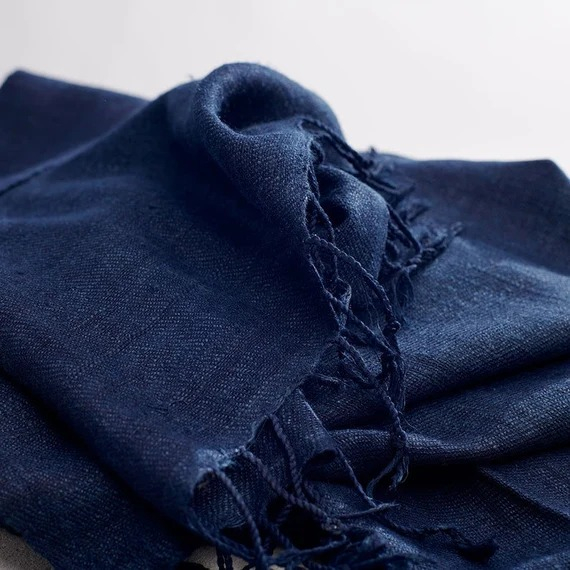
Introduction:
Indigo dye is one of the oldest known natural dyes, and its deep, rich blue color has been used to color textiles for thousands of years. Derived from the Indigofera plant, indigo was once considered so valuable that it was referred to as “blue gold.” In the North-Eastern states of India, such as Assam, Manipur, and Nagaland, the use of indigo dye has deep cultural roots, where it is often used in traditional weaving and handloom industries. Indigo dye’s popularity has persisted through the centuries due to its striking visual appeal and strong historical and cultural significance.
Description:
The process of extracting indigo dye from the Indigofera plant is both time-consuming and labor-intensive, but the resulting color makes it worthwhile. The leaves of the indigo plant are harvested and then soaked in water to ferment. During the fermentation process, the plant's natural enzymes break down the compounds within the leaves, converting them into indigotin, the pigment responsible for the characteristic blue hue. After fermentation, the water is drained, and the remaining pigment is oxidized, transforming into indigo dye.
Once the dye is ready, the fabric to be dyed is dipped repeatedly into the indigo vat. The fabric appears greenish when first removed from the dye bath, but as it is exposed to oxygen, the color deepens into the familiar rich blue. This transformation is one of the most magical aspects of working with indigo and is a process cherished by artisans. The depth of the blue can be controlled by the number of dips—the more times the fabric is dipped and oxidized, the darker and more intense the blue will become.
In Assam and Manipur, indigo dyeing has a long tradition, particularly in the handloom sector. Artisans use indigo to dye threads that are later woven into intricate patterns on looms, creating traditional garments, shawls, and other textiles. Indigo-dyed fabrics are prized for their durability and colorfastness, with garments often passed down through generations. The dyeing process, while challenging, is a point of pride for weavers, who view it as both an art and a science.
While indigo is often associated with the iconic blue of denim, it has a wide range of applications in the North-East. The color can vary from pale sky blue to nearly black, depending on the strength of the dye bath and the number of dips. Additionally, indigo can be combined with other natural dyes, such as onion skin or turmeric, to create unique color blends, such as olive green or teal. This versatility has helped maintain indigo’s place as a staple in the natural dye repertoire of North-Eastern artisans.
Culturally, indigo holds significant meaning in many parts of the world, including the North-East. In some communities, indigo garments are worn during festivals or special occasions, symbolizing prosperity, stability, and depth of spirit. The craft of indigo dyeing is also seen as a meditative process, with the repetitive motions of dyeing and oxidizing allowing artisans to connect with their craft on a deeper level. Despite the availability of synthetic dyes, many artisans in the region continue to use natural indigo, recognizing its environmental benefits and its role in preserving traditional dyeing practices.
Indigo dye is a powerful symbol of cultural heritage, sustainability, and craftsmanship in the North-East. As global interest in sustainable and eco-friendly fashion grows, indigo continues to captivate modern designers and consumers alike. Its rich history, combined with its vivid color and eco-friendly production, ensures that indigo remains a cornerstone of natural dyeing practices in the region.